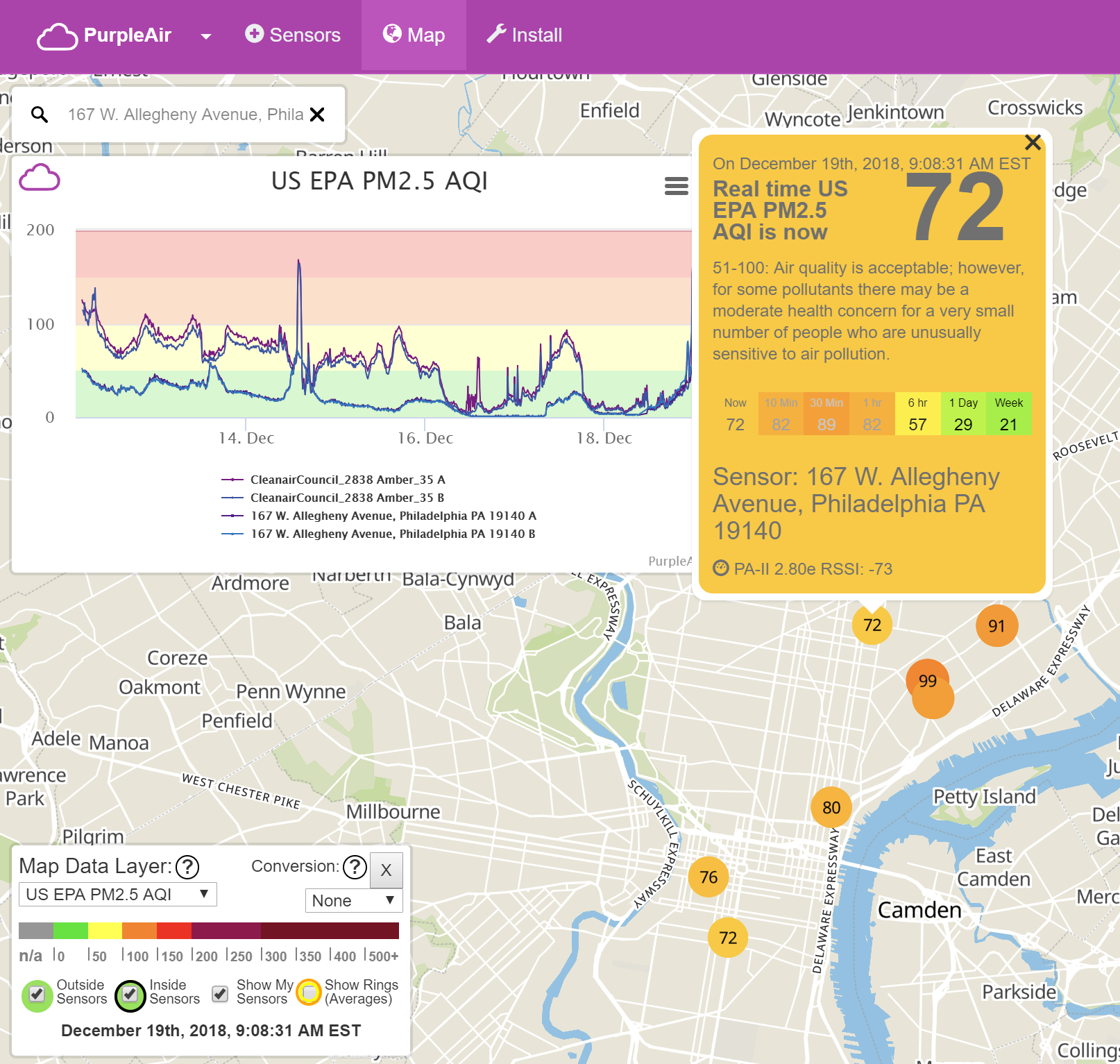Air & Water Quality
Junp To Sections Below
- Elcon Hazzardous Waste Incinerator
- Warminster PFOA Contamination
- Bishop Tube VOC Contamination
- Urban Air Quality
- Water Conservation
- Salt & Plastics In Our Water
Facts & Stats
Local Actions & Ordinances
Local Organizing
Stormwater Management
Resources
What Can I Do?
On May 9, Sierra Club, PennEnvironment and Conservation Voters of PA hosted an excellent webinar about the quality of our local streams, the water we drink and the impact of climate change on our health.
Watch recorded sections
- Stroud Water Research - Chester County Stream Quality
- Jesse Lytle - Climate Impacts on Our Health
- Q&A session
Elcon - A Threat No More
Elcon Recycling Services, LLC has formally withdrawn it's application in Falls Township as of Aug 17, 2020. See the letter of withdrawal here.
Thanks to everyone that supported the resistance movement and activism and call to look closely at the science of what could happen at this proposed facility. Following is info about the Elcon project that was almost a reality.
his proposed project in Falls Township, Bucks County, would be built in a 500 year floodplain, a half mile from the banks of the Delaware River (prime drinking water source for over 17 million citizens), feet from a marsh connected underground to the artery system that feeds the River, and less than a half mile, more like feet, near the banks of a stream (Biles Creek) that is a direct feeder into that River also. There are approximately 3+ million people within 50 miles of this site. Between 17 and 24 trucks per day would be hauling these poisons on small roads designed for buggies and small cars, through neighborhoods packed with people. Elcon has no plan on file in case of a trucking accident; indeed, there aren't any experts about what to do if there is a trucking accident because this has NEVER been done before and these proposed oxidation processes have never been tested before, let alone the trucks to be used to haul the stuff. And Elcon's record in its only plant in Israel has been cited for illegal air and liquid discharges....so their record is already faulty.
Facts & Stats
- Elcon itself indicates that it wants permission to emit 25 Tons of Nitrogen Oxides into the air into an area that has been consistently failing the Clean Air Standards for over 10 years.
- The sludge left over from this untried process, even if successful, would include the following, making it so hazardous that it would trigger laws regarding hazardous waste disposal procedures: Toxic Salts, Chromium, Copper Cadmium, Lead, Mercury, Chlorobenzene and Trichloroethane, and that is just a start. And Elcon wants PA DEP to put aside these rules for them and them alone, in order to allow Elcon to dump the stuff in a regular landfill that happens to be nearby.
- The site would be placed within a 500 year floodplain, that DRBC, the city of Philadelphia and other entities are now saying that critical facilities should never be constructed in these areas. As an additional note: this particular 500 year floodplain has been flooded fairly frequently in recent years, making the designation of "500 years" somewhat questionable.
- Already existing scrubber technology used in incineration facilities do not transfer to this kind of project.
- Ditto for containment technology.
Resources
Local Organizing
Thanks to these organization that helped stand up to Elcon and kept the pressure on the DEP and elected officials to pay attention to this potentially catostrophic proposal:
1- BUCKS-POWA - They are the local group started by residents and concerned non residents...Lise and George Baxter, couple extraordinaire, lead this group with wonderful associates, all from Bucks County
2- Delaware Riverkeepers Network - Fred Stine is the lead person there on this
3- Clean Air Council - Russ Zerbo is the lead for the Clean Air Council group
Warminster PFOA
PFOs and PFOAs are persistent. They remain in the system for four years and then are reduced to half the effect. Longer chains are degraded to the chains of eight carbons and fifteen fluorides where they then persist in the soil, air and water.
They are endocrine disrupters affecting hormones and immune systems, attacking the liver and the kidney. I observed ten-year-old boys with brain tumors, women with thyroid problems and immune diseases and men with testicular cancers.
These indestructible chemicals are found at airports, the Naval Base, bases across the nation as well as so many other areas because of the variety of sources and uses.
Currently there is only one sampling method for water and that is method 597. Air sampling requires methods for gaseous and particulate phases.
Within the Pennsylvania Commonwealth there is only one company qualified to do the sampling of water. It is located in King of Prussia.
People need to know about these chemicals, their health effects and the difficulty to protect yourself from them. The first thing to do is to contact Pennsylvania Department of Environmental Protection and US EPA Region 3 if you have any concerns.
Treatment of drinking water and Wastes
PFOs and PFOAs and their shorter chained derivatives have been found in the drinking water in Alaska, in sites where fracking occurs, in airports, military bases, at sites where they are used in manufacturing (WV has two sites, so far), in the drinking water on Cape Cod and on and on. If drinking water is contaminated, then three types of filtration is used:
- Ion exchange: between a solid resin and an aqueous solution
- Activated carbon: absorption
- ECs: electrolysis, precipitation
Air: sample collections is two types: gaseous phase and particulate phase but how do you treat this and prevent people breathing either of these phases in? absorption on resins.
Safe level? US EPA has suggested 70 parts per trillion but everyone who spoke in Hatboro agreed that that was too high since those exposed at lower levels exhibited symptoms attributed to PFOs and PFOAs. Some said there is no safe level.
After treating water or collecting air polluted with the PFOs and PFOAs, what do we do with the waste? PFOs and PFOAs are almost indestructible. Burning at extremely high temperatures is recommended but often requires two phases and releases are likely to occur.
Resources
Local Organizing
Bishop Tube
A community group fighting for environmental
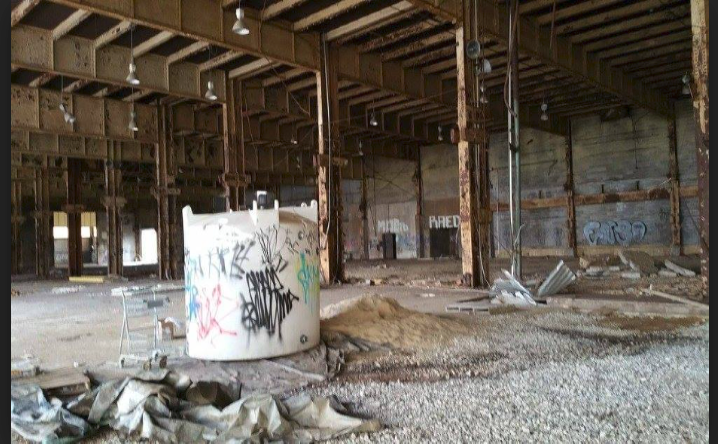 justice has been actively concerned about the old Bishop Tube factory, an unremediated HSCA (Pennsylvania Hazardous Substance Cleanup Act) toxic contamination site, and has organized to turn this site in Malvern back into a natural space. (Bishop Tube and Company, Platinum Works processes precious metals and fabricated stainless steel items such as tubing and piping. It closed in 1999.) Brian O’Neill, who specializes in ‘cap and develop’ brownfield sites, purchased the land for only $700,000 and wishes to build residences there. This is more than an environmental justice issue for this community who risk being exposed further to TCE contamination if disturbance of the soil, stream that courses through the site, and groundwater result in exposure via air vapors and water, which was reported in an ATSDR report in 2008 (U.S. Agency for Toxic Substances and Disease Registry). There is also evidence that the large TCE plume in the water has traveled a mile downstream (northeast) on its way to the Valley Creek and then Schuylkill River. Shockingly, there is no completion of the Department of Environmental Protection assessment of the site, and no remediation plan for cleanup.
justice has been actively concerned about the old Bishop Tube factory, an unremediated HSCA (Pennsylvania Hazardous Substance Cleanup Act) toxic contamination site, and has organized to turn this site in Malvern back into a natural space. (Bishop Tube and Company, Platinum Works processes precious metals and fabricated stainless steel items such as tubing and piping. It closed in 1999.) Brian O’Neill, who specializes in ‘cap and develop’ brownfield sites, purchased the land for only $700,000 and wishes to build residences there. This is more than an environmental justice issue for this community who risk being exposed further to TCE contamination if disturbance of the soil, stream that courses through the site, and groundwater result in exposure via air vapors and water, which was reported in an ATSDR report in 2008 (U.S. Agency for Toxic Substances and Disease Registry). There is also evidence that the large TCE plume in the water has traveled a mile downstream (northeast) on its way to the Valley Creek and then Schuylkill River. Shockingly, there is no completion of the Department of Environmental Protection assessment of the site, and no remediation plan for cleanup.
Facts & Stats
What are the contaminants? The ATSDR reported the presence of volatile organic compounds (VOCs), primarily trichloroethylene and trichloroethane (TCE) in the groundwater underlying the site, as well as heavy metals in the soil and groundwater. TCE, according to the U.S. Environmental Protection Agency (EPA) is a clear, colorless, nonflammable liquid that evaporates quickly, that does not occur naturally and is primarily the result of industrial processes. However, the ATSDR report that other chemicals were used there as well, including paints, nitric acid, hydrofluoric acid, caustic materials for water treatment, petroleum based oils, coolants, and many other chemicals. Unfortunately, the EPA reported that TCE is found in many drinking water supplies in the U.S. TCE exposure can be associated with neurotoxicity, immunotoxicity, developmental toxicity, liver toxicity, kidney toxicity, endocrine effects, and several forms of cancer.
What is the safe exposure level for TCE? The National Institute of Occupation Safety and Health recommends an air exposure limit of 2 ppm with a 60-minute ceiling, and 25 ppm over a 10-hour time-weighted average for all other air exposures. The EPA has established regulations for a limit of 5 ppb in drinking water.
What level was measured at the Bishop Tube site? A level of 1,900,000 ppb was identified at Bishop Tube.
Resources
Department of Environmental Protection:
https://www.dep.pa.gov/About/Regional/SoutheastRegion/Community%20Information/Pages/Bishop-Tube.aspx
For a quick history:
Local Organizing
The community group consists 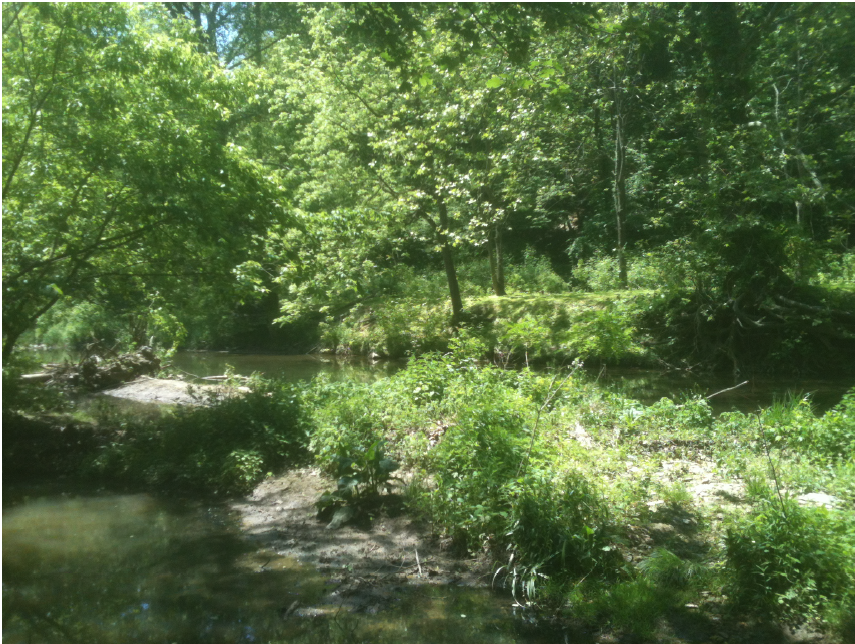 of the neighborhood that borders the Bishop Tube plant, and is joined by Delaware Riverkeeper Network who provides organizational leadership, Valley Forge Trout Unlimited, Chester County Master Watershed Stewards, and the Sierra Club of Southeast Pennsylvania. This coalition has made continuous progress over the past year+, despite many challenges, and has informally educated and formally presented to East Whiteland Township who is considering approving the development proposal by Brian O’Neill, as well as the Chester County County Commissioners, Chester County Planning Commission, our State Senate and legislative Representatives, and the larger community about the dangers of developing this site because Brian O'Neill intends to build residences there. O’Neill has recently proposed a plan to reduce development to 93 homes, hoping to cut a deal to permit him to profit from this site.
of the neighborhood that borders the Bishop Tube plant, and is joined by Delaware Riverkeeper Network who provides organizational leadership, Valley Forge Trout Unlimited, Chester County Master Watershed Stewards, and the Sierra Club of Southeast Pennsylvania. This coalition has made continuous progress over the past year+, despite many challenges, and has informally educated and formally presented to East Whiteland Township who is considering approving the development proposal by Brian O’Neill, as well as the Chester County County Commissioners, Chester County Planning Commission, our State Senate and legislative Representatives, and the larger community about the dangers of developing this site because Brian O'Neill intends to build residences there. O’Neill has recently proposed a plan to reduce development to 93 homes, hoping to cut a deal to permit him to profit from this site.
All concerned about the effects on our streams, watershed, and environmental health have joined this effort, and the broader the concern, the more power we have to return this site to a natural land. Our vision is Bishop Tube – Clean and Green. This has been the best solution for some contamination sites – to remediate to the highest standard required by law, and then permit the biogeophysical processes to decontaminate further.
Urban Air Quality
Our primary concern with air quality is PM (Particle Matters) in center city. The major source of PM in center city are automobiles, buses and trucks. Those particles can accumulate a few feet from the grounds so children and people who commute by bicycle would be particularly vulnerable to the dangers of PM.
Facts & Stats
Particles smaller than 10 micrometers in diameter; and "fine particles" (such as those found in smoke and haze), which are 2.5 micrometers in diameter and smaller are linked to health issues, including lung cancer.
Resources
EPA Particulate Matter Pollution Page
American Lung Association State Of The Air reports
Clean Air Council Mobile Air Monitors
Related Articles
- Researchers estimate over two million deaths annually from air pollution
- The effect of rurality on cancer incidence and mortality
- Particulate Matter Air Pollution Exposure, Distance to Road, and Incident Lung Cancer in the Nurses’ Health Study Cohort
Water Conservation
Conservation of Water Quality and Watershed Health: Drinking Water
[this section first drafted by Carol Armstrong]
This overview focuses on risks and impacts to human uses of water, and only marginally addresses problems for aquatic species, biodiversity, and ecological systems (a future article). It does not address all the components of concern in our water. Threats to the water quality in the United States including Pennsylvania are:
- Runoff Pollution and Sediments from Impervious Surfaces: our driveways, parking lots, lawns, sidewalks, construction sites, ball fields and other developed grass fields, buildings and roofs, highways and roads, paved trails, all of which usually discharge directly into streams and eventually lakes, reservoirs, estuaries, bays, and oceans upon which we are dependent;
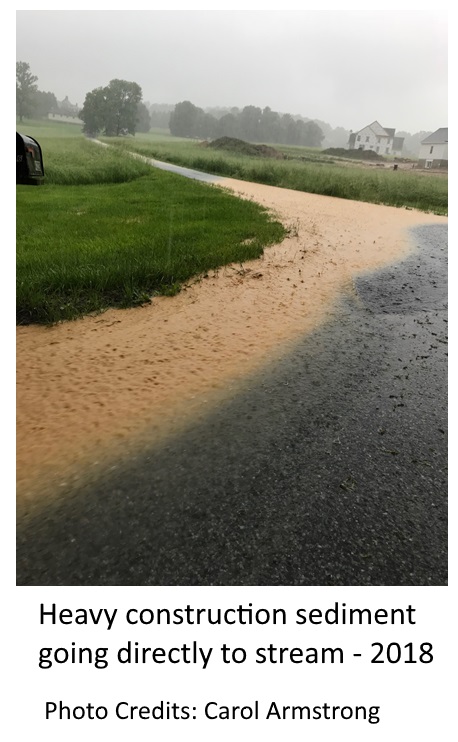
- Fossil Fuel Extraction and Transportation including coal, other mines, oil, and gas, which reach our surface and ground water supplies; infrastructure operation and accidents also take clean water from the environment and release water with industrial chemicals used for extraction into our freshwater supplies;
- Industrial Pollution because we continue to permit industrial facilities to release pollutants into natural waterways, and we have many landfills, Superfund sites, and State hazardous waste programs that leak and runoff to streams and other waterways;
- Agricultural Pollution produces excessive levels of nitrogen and phosphorous that cause eutrophication (too many nutrients) of our streams, rivers, estuaries, and bays which indirectly cause oxygen deprivation and destroy aquatic ecological systems; also excessive levels of herbicides and pesticides, ammonia, and nitrous oxide, as well as excessive levels of sediment that smothers aquatic life that live on the stream and estuary/bay bed;
- Air Pollution is a significant source of water pollution, such as acid rain, and comes from airborne emissions and atmospheric dust and greenhouse gases that are absorbed into water;
- Sewage Treatment Plants because even the most updated sewage treatment plants cannot filter out the various pollutants and chemicals. Cities with combined sewer overflows (CSO, associated with older cities) are permitted by law to spew untreated and raw sewage directly into a stream or river or other body of water during rain that overwhelms a treatment facility. A CSO is a combined sewer system that is designed to collect and combine rainwater runoff, domestic sewage, and industrial wastewater in the same pipe. Most of the time, combined sewer systems transport all of their wastewater to a sewage treatment plant where it is treated and then discharged to a water body. However, when the volume of wastewater exceeds the capacity of the treatment plant or sewer system, untreated stormwater and wastewater discharges directly to nearby streams, rivers, and other water bodies. The Philadelphia Water Department reports there are 164 CSOs in Philadelphia that discharge to Cobbs Creek, Tacony Creek, tidal Pennypack Creek, Schuylkill River, and Delaware River. Philadelphia also has 455 stormwater outfalls in every watershed in Philadelphia, which spews into the nearby stream water from street inlets, building downspouts, and other storm sewer lines. Pennsylvania is a state with one of the greatest number of cities with CSO outfalls directly to streams and rivers. Other cities in our area are Norristown, Chester, Bethlehem, and Harrisburg. The EPA reports there are 860 municipalities with combined sewer systems in the U.S. (even California has 36 CSOs in two cities). Philadelphia is a world leader in water quality, and their strategy is to reduce 85% of their CSOs by building thousands of green infrastructure sites. Other towns can model this locally, as it is less expensive in the short term, and in the long term, than replacing or upgrading sewer treatment plants.
Drinking water supplies in the U.S. are among the safest in the world, however, our drinking water sources are becoming contaminated.
Public Water Treatment can remove:
- Dirt and other dissolved particles by adding chemicals (chlorine, iodine, oxidizing agents) that bind with the particles and form larger particles, called floc, that are filtered;
- Parasites, bacteria, and viruses are removed by filters;
- Chlorine or chloramine may be added to kill remaining pathogens;
- Suspended solids such as algae, fungi are removed;
- Minerals such as iron and manganese are filtered;
- Much of phosphorus, in the form of phosphates (from soils/rocks, human and other animal waste, detergents, food residues) are dissolved and removed by water treatment plants with that capacity (usually not the food and beverage industry wastewater treatment systems);
- About 50% of nitrogen is removed by water treatment systems.
Water treatment plants do not remove:
- About half of our medications;
- Salts are not currently removed, though chlorides in drinking water in the northern U.S. are reaching the maximum for drinkable water, and the solutions will be expensive;
- The EPA reported in 2016 that personal care products are increasingly being detected at low levels in surface water, and may impact aquatic life, and are being consumed by humans in combinations that we cannot predict;
- Many “contaminants of emerging concern” , that are commonly derived from municipal, agricultural, and industrial wastewater and other pathways, are endocrine disruptors that alter the normal functions of hormones causing a variety of health effects;
- Arsenic is used in pesticides and agriculture; organophosphate pesticides are being phased out and replaced with glyphosate, pyrethrinoids, and neonicotinoids, which are less harmful but which are unhealthy for plants and animals;
- Home filters are needed to remove lead, chlorine (but chloramine is more difficult to remove), and other contaminants;
- PCBs (and other polychlorinated compounds) were in strong industrial use until 1977; they persist in the environment, are toxic, and they bioamplify along food webs as far as the earth’s poles;
- Polybrominated compounds are used as flame retardants that replaced polychlorinated compounds, have also appeared in the Arctic and Antarctic environments and some are now being regulated;
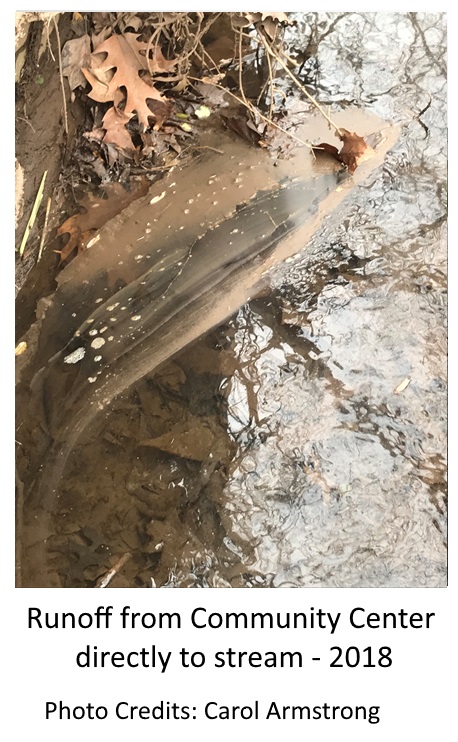
- Neonicotinoids are persistent in the environment and target ‘pests’ as well as pollinators, particularly honey bees;
- Plasticizers are added to synthetic resins to increase the flexibility of plastics, and are endocrine disruptors that are not filtered out by sewage treatment plants;
- PPFAs (perfluoroalkyls and polyfluoroalkyls) are fume suppressants and aqueous film forming foams that persist in the environment, bioaccumulate, and cause immunotoxic and hepatotoxic toxicity;
- The EPA published health advisories for PFOA (perfluorooctanoic acid, used worldwide as an industrial surfactant and fed to meat animals) and PFOS (perfluorooctanesulfonic acid, was a key ingredient in Scotchgard and in stain repellents) both of which are extremely persistent in the environment. Several states including Pennsylvania are investigating and developing systems for the identification of risk in residents, treatment of residents, and prevention of PFOA and PFOS from reaching drinking water.
As always, prevention is much less expensive than cure. Research is seeking methods to derive energy, chemicals for commercial markets (such as phosphorus, iron, calcium, aluminum salts), and clean water from sewage. Sewage sludge has long been proposed for incineration and then use, but it retains many harmful metals and chemicals (such as dioxin), and is a health risk. . A new trend is the recycling of water for industrial use that the industry reuses (e.g., beer brewing and in-door farming), rather than drawing more fresh water. A large mushroom farm in Kennett Square PA has accomplished this with great reduction in spraying of wastewater onto fields that then seeps down to surface and ground waters. Now mushroom production is recycling their water on site so that it is reused. Will our towns and states have the resources for these advanced water treatment facilities? Increasing regulation and updated water treatment systems will come with increases in taxes, savings in water treatment, and/or new funding sources in order to try to keep up with the chemicals accumulating in our soil, water, food sources, and our bodies.
What can you do as an individual? Take time to think about your purchases, and try to refuse, reduce, and find nontoxic and simple alternatives for using plastics, processed food, medications, beauty and personal care products, cleaning products, clothing made from synthetic materials, lawn products, pesticides, conventionally farmed food, and meat/fish.
On May 9, 2020, Sierra Club cohosted an informative webinar about water quality in Chester County. The recorded presentation by Dr Ensign from the Stroud Water Research Institute is HERE.
Salt and Plastics in Water
Everything that we do on the land, affects the water. This is why changes in water temperature, chemistry, stream forms, aquatic life, and ecological habitats are the most significant indicators of the climate crisis. This winter, let’s focus on salt. Would you empty a bag of salt in a stream or lake? Of course not, but that is what we are doing when we use salt in the environment. Spreading salt on sidewalks, driveways, roads, and parking lots can make travel safer for us, but it goes into storm drains, which are connected to underground pipes that funnel the salt to the nearest body of water.
There is also increasing awareness of what has become omnipresent plastic in our water. Recent studies show plastic in human gut, tap water, and foods. Research is only beginning to help us understand how plastics are absorbed by living tissue, and how it is transferred from one species to another. For both salt and plastics, thinking about prevention goes a long way.
Local Action & Ordinances
The Environmental Protection Agency has rules for salt storage, and it is illegal to place salt piles near streams or wells. However, salt piles that are not secured will result in salt flowing to water that may not be visible from the salt pile. The EPA requires monitoring of sodium annually for surface water and every three years for ground water (40 CFR: 141.41). Drinking water advisories for salt reflect the adverse taste of sodium, with EPA’s health recommendation that it not exceed 20 mg/L, and for taste that it not exceed 30-60 mg/L. Water treatment to prevent too much salt in our waters is expensive, and chlorine and chloramine are added to our drinking water supplies to ‘burn out’ the salt.
There are no regulations yet about how much and what plastics we can release to surface water, and no regulations about how much can be in our food, including seafood.
Local Organizing
Education about the problem of increasing levels of salt in our streams is beginning to be brought to public attention by municipal and state government agencies. Salt is a long term pollutant that does not go away, and accumulates in our water supplies whether for wells or municipal draws from streams/rivers, ponds, lakes, and reservoirs. Salt causes heightened mortality of the insects that are food for fish. In Chester County, a suburban area west of Philadelphia, the levels of salt in our surfaces waters has been increasing every year, and the rate of increase has accelerated since 2012 according to Andrew Reif, a biologist with the U.S. Geological Survey who analyzes more than 40 years of data on our environmental waters.
Local watershed groups are beginning to organize around the problem of plastics in our waters, using a science-based approach to developing best practices for measurement. The Sierra Club is collecting information and working to help local governments development ordinances to limit the use of plastics. This will require ongoing vigilance by everyone, as the increases in natural gas production will lead to increasingly cheaper sources of plastics in industry, and of things in our everyday lives that are made of plastics. Plastics pose a huge threat to our water.
Stormwater Management
Stormwater management is a principal focus of all towns and neighborhoods, and carries salt and plastics including invisible microplastics. What runs off uphill affects everyone downhill. Much of the transportation, industrial, and commercial infrastructure lack adequate stormwater controls, and solutions come with great expense and one acre at a time. However, the economic costs of stormwater controls are beginning to be known: a 2018 report by ECONW by Rempel and Buckley found that mature trees around streams save $12k to almost $24K per year per acre of stormwater treatment in a suburban setting in the Delaware River basin. Many towns in Pennsylvania have MS4 requirements, which are permits that allow that town to send its stormwater directly to the streams. Stormwater runoff is always damaging to aquatic life, and flooding is damaging to wildlife and human habitats. The Municipal Separate Storm Sewer System (thus, MS4) Permit was a product of the EPA for the purpose of decreasing pollution discharges, and current versions require public education about reducing stormwater runoff. It is important to recognize that these efforts have not stopped the degradation of our streams, and there are many things that residents can do to try to keep precipitation so that it infiltrates ‘in place’.
SALT
Basic facts: “Chlorides in Fresh Water” - URI.edu
Influence of salts on our drinking water: “Novel ‘chemical cocktails’ in inland waters are a consequence of the freshwater salinization syndrome”, by Kaushal et al, 2018:
If you see poorly covered or secured salt piles, report the to the Public Works of the city or township.
PLASTICS
Trends in plastic bottles distributions in the Schuylkill River basin: “Choose to Reuse, and #DrinkTapPHL”, by the Philadelphia Water Department:
Sustainable Packaging Coalition:
National Oceanic and Atmospheric Administration (NOAA) education: “Can you cook a plastic-free meal?” NOAA Office of Response and Restoration, Marine Debris Program:
What Can I Do?
To decrease salt use this winter, shovel early, and shovel often, before adding salts. After clearing the surface, consider using an alternative such as sand, wood ashes, kitty litter, and coffee grinds that will provide traction, absorb heat from the sun, and warm the ground. Rock salt is effective at 20o-30oF, and calcium chloride down to 0oF. If an environmentally sensitive area, look for potassium acetate and calcium magnesium acetate. Of the chlorides, calcium chloride is preferred as it is applied at a lower rate and works at lower temperature. Use much less salt than you are used to seeing – an average parking space needs ½ pound of salt. Crystals should never overlap and should be up to three inches apart. Use a shaker or spread by hand.
Try to take single use plastics out of your life, purchase materials of natural fibers, and don’t let garbage containers over flow as this is a common cause of plastics getting into streams. Be kind – pick up plastics when you see it, and remember that the next time we have a heavy rain, a great deal of that loose plastic will find its way to the water.
Talk to your local township to learn more about their MS4 efforts to reduce pollutants going to your streams, lakes, and bays. The Environmental Advisory Council, if your town has one, should be helpful. Offer to help with the public education that is a required component of MS4 permits.
Support your local watershed association, and learn about their initiatives to protect your local streams.
